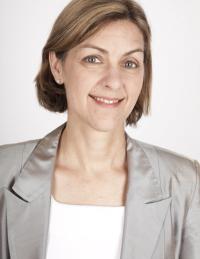Robin Lloyd

News editor, Scientific American
Robin Lloyd, a science writer going back to the Galileo mission to Jupiter, is Scientific American’s news editor, responsible for planning, editing and assigning stories for SA's Web site and for managing its home page. She also oversees SA's social media efforts. Previously, she was a senior editor for LiveScience.com and SPACE.com. She has additional experience in print journalism (Pasadena Star-News); wire service journalism (City News Service in Los Angeles); and network online journalism (CNN.com). She worked for five years as a science publicist at the American Museum of Natural History in New York City. She earned a Ph.D. in sociology from the University of California, Santa Barbara, and received a Knight Science Journalism Fellowship at the Massachusetts Institute of Technology for the 1998-1999 academic year. Lloyd currently serves on the board of the Council for the Advancement of Science Writing, and speaks regularly to early-career science writers, science journalists and students about the profession of science writing.
Pitch specs for Scientific American:
We seek enterprised, contextualizing, bigger-picture, or trend stories about science, health and
technology, or unexpected angles on journal article news that others won't have. Another way
of putting it: we seek coverage of emerging areas of science that are under the radar and
haven't been covered by mainstream science news outlets. No profiles, Q&As, or reviews,
please. We typically assign 700-word stories. Be aware that our staff and many other writers
already closely monitor the better known journals (Cell, JAMA, NEJM, Nature, Science, PLoS,
PNAS), so pitches from these journals are harder to land with us.
In writing, we seek pitches that are no longer than four paragraphs long. Ideally, pitches make a
point, include a draft nut paragraph in the 1st or 2nd sentence, expand on the idea for a few
paragraphs, and reveal what the story will state, rather than providing background.
The pitch also should briefly answer these questions: Why would Scientific American's audience
want to know about this topic? Why should we run this story now rather than five years ago or
five months from now, for instance? And what are the broader implications of these findings, or
how can this topic/finding help our readers understand themselves or their world?
Contact: rlloyd@sciam.com
Speaking:
-
Saturday, November 2nd, 11:00 am to 12:15 pm
-
Saturday, November 2nd, 3:45 pm to 5:00 pm




